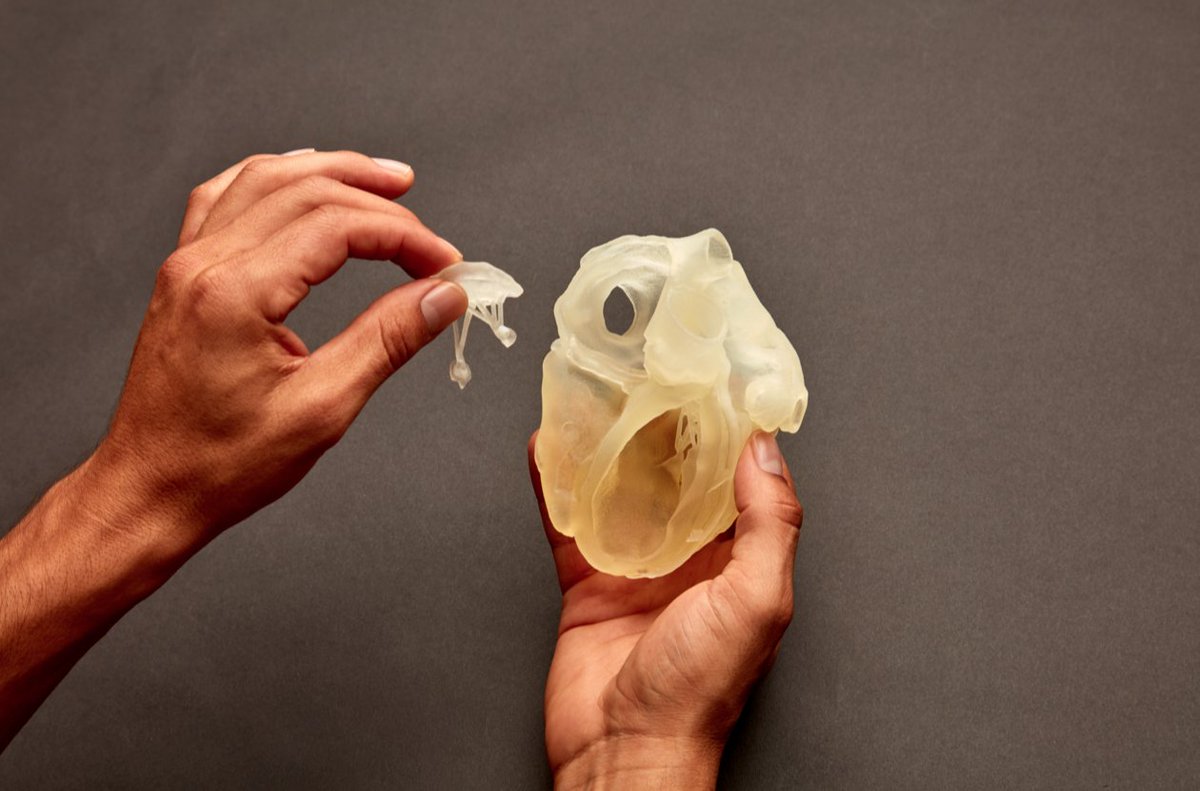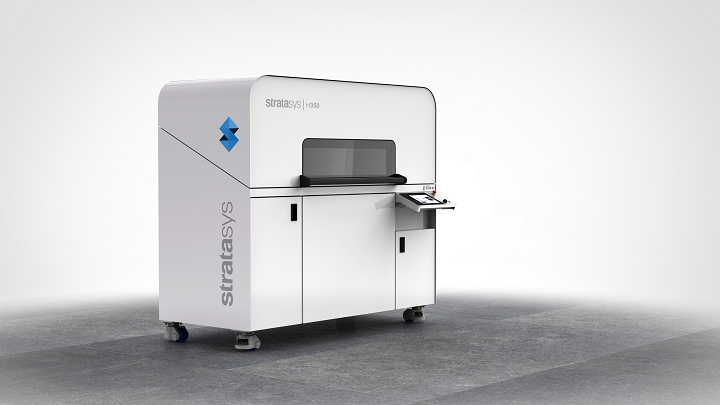Stratasys (NASDAQ: SSYS) reported its third-quarter numbers on November 4, 2021, with a notable 24.3% percent surge in revenue to $159 million from $127.9 million last year. Boosted by product sales growth of 30% amid improving Covid-19 conditions, the company projects fourth-quarter revenue roughly 16% higher year-over-year and an increase in sales in 2022. The pioneering 3D printing firm has been especially busy this week. Not only did it report quarterly earnings, but the company also announced a new partnership with Ricoh to make point-of-care anatomic models more accessible to healthcare providers.
Revenue from the company’s systems and consumables segments for the third quarter showed robust growth of 35% and 27%, respectively. Systems sales typically lead to increased consumables and services that generate profitable revenue as customers ramp up their utilization, which has been the case during the last three months. System sales of $52.3 million came particularly from manufacturing machines like FDM printers F900 and F770, as well as the F370, which offers carbon fiber 3D printing, and the new J5 DentaJet.
Meanwhile, the Stratasys Direct service bureau is not yet at 2019 levels but was up over 25% from Q3 last year and is expected to continue growing. Overall, services revenue was $50.1 million, up 13% compared to the same period last year, and 12.8% on a constant currency basis. The fact that customer support revenue also increased by 7.2%, to $29.5 million is a good indication of market recovery trends.
One of the highlights of the quarter ending September 30, 2021, was earnings. Stratasys generated a profit of $500,000 (or 1 cent per share), an improvement over the previous year when net losses amounted to $3 million (or 5 cents per share). Analysts tracked by the Zacks Consensus Estimate were expecting a loss of 8 cents per share; however, Stratasys has once again beaten consensus earnings per share estimates, just like it did in the last three quarters.
After the report’s release, Stratasys shares rose 15%, peaking at $37 before midday. This was the highest recorded value in the last six months. According to estimates by online stock analysis platform Simply Wall Street, Stratasys exceeded the US tech industry and the US market, which returned 37.3% and 35.3% over the past year, respectively.
In line with its growth strategy, the company is preparing to see incremental upside with the launch of its two new mass production systems, Origin One and the H350, which resulted from the acquisitions of Origin and Xaar 3D, respectively. During an earnings call with investors, CEO Yoav Zeif said Stratasys had already deployed H350 systems at beta sites, including service bureaus, and that the feedback from customers was outstanding, with all of the early installations already printing end-use parts at volume scale. In addition, the H350 can also print many of its own parts, enabling more efficient production capacity support, and it’s on the verge of an official debut, most likely next year.
During the quarter, Stratasys gained additional traction after signing two major end-use part manufacturing contracts, one of them with the US Navy and the other with a leading global original equipment manufacturer (OEM). As part of the deal, the military department will purchase up to 25 large F900 FDM systems, materials, and support services over five years for $20 million. Zeif said this could be “the biggest government additive manufacturing (AM) deal of its kind.”
As a result, this purchase will advance the US Department of Defense (DoD)’s stated strategy for increasing its use of AM and allow the Navy to produce mission-critical parts closer to their point of need. It will also demonstrate the ability to use distributed manufacturing with digital inventory and global deployment. In addition, the machines will be geared for producing end-use parts, tooling, and training aids, and will be part of the Navy’s aircraft maintenance program. Similarly, a second multi-million-dollar contract for multiple F900 systems was also awarded, but this will be a repeat purchase from an undisclosed leading brand-name OEM.
On the medical side, Stratasys started working with Ricoh 3D for Healthcare to provide anatomical models at the point of care for hospitals across the US. With the help of integrated IBM Watson Health technology and Stratasys 3D printers, this collaboration will enable clinicians to access 3D printed, patient-specific anatomic models for greater visibility into patient needs.
Ricoh uses the Stratasys J750 Digital Anatomy and J5 MediJet 3D printers to create the life-like models produced for Ricoh 3D for Healthcare that can reflect an individual patient’s pathology and be physically manipulated like human tissue. Medical models allow clinicians to deliver more personalized care through better surgical preparation and patient education and can also be used for medical training purposes. Wanting to reduce barriers to entry that healthcare providers can encounter when setting up a 3D printing facility, Stratasys and Ricoh will render these models to any facility using IBM iConnect® Access, a zero-footprint universal viewer for real-time image sharing and exchange.

The new J5 Medijet for medical applications is designed to make anatomical models, surgical guides, and medical equipment using sterilizable and biocompatible materials. Image courtesy of Stratasys.
Commenting on Stratasys’ solid medical segment, Zeif explained that “healthcare has been an increasing growth driver and has grown faster than any other end-market for us over the past two years. 3D printing brings key benefits such as personalization for medical needs and mass customization for dental applications. During the quarter we furthered our expansion into dental, particularly through strong sales of our new DentaJet system. We continue to add new customers to our install base, as they appreciate our unique advanced features, such as the ability to print a mix of parts on a single tray, with unattended operation.”
Fully in investment mode, Stratasys believes it will drive increased revenue and profits in the future. Based on current market conditions and assuming that the impacts of the pandemic or global supply chain constraints do not impede the economic environment further, the company will continue executing its vision of becoming the first choice for polymer 3D printing solutions.
Subscribe to Our Email Newsletter
Stay up-to-date on all the latest news from the 3D printing industry and receive information and offers from third party vendors.
Print Services
Upload your 3D Models and get them printed quickly and efficiently.
You May Also Like
The Market and Industry Potential of Multi-Material 3D and 4D Printing in Additive Electronics
Additive manufacturing leverages computer-based software to create components for products by depositing either dielectric or conductive materials, layer by layer, into different geometric shapes. Since its birth in the 1980s,...
3DPOD 262: Bio-inspired Design for AM with Dhruv Bhate, Arizona State University
Dhruv Bhate is an associate professor at Arizona State University. There, he looks at structures, materials, and design. Previously, he worked at PADT as well as in the semiconductor and...
3DPOD 261: Tooling and Cooling for AM with Jason Murphy, NXC MFG
Jason Murphy´s NXC MFG (Next Chapter Manufacturing) is not a generalist service; instead, the company specializes in making tooling. Using LPBF and binder jet, the company produces some of the...
3DPOD 260: John Hart on VulcanForms, MIT, Desktop Metal and More
John Hart is a Professor at MIT; he´s also the director of the Laboratory for Manufacturing and Productivity as well as the director of the Center for Advanced Production Technologies....




































